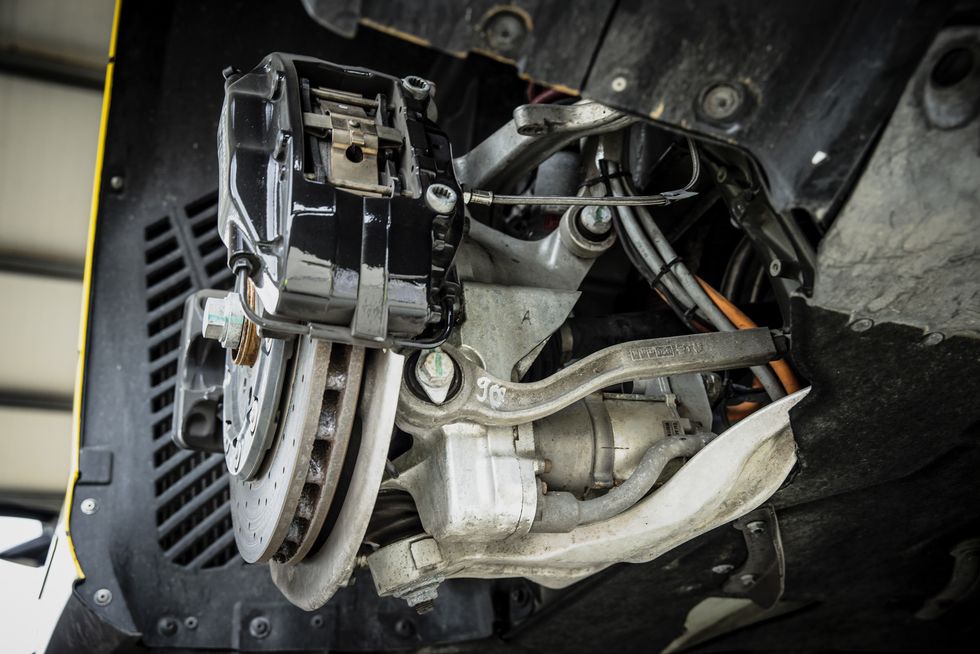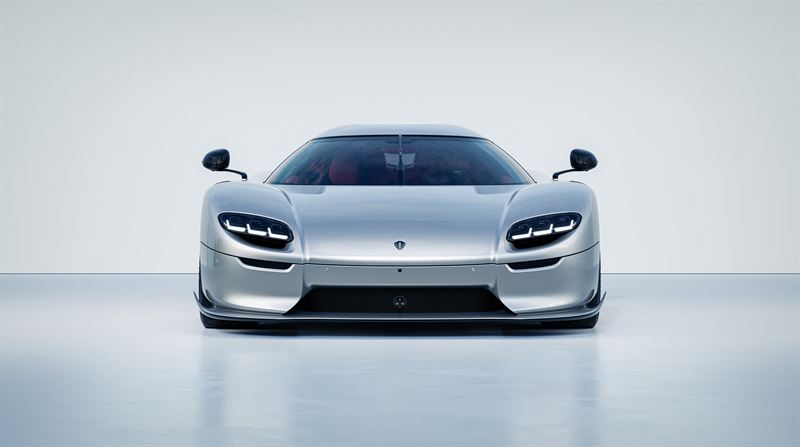This decade has seen one of the biggest paradigm shifts in the automotive industry. While the prior decades will be remembered for battles between performance divisions like Mercedes AMG and BMW M to eke out the maximum from their mettle, this decade doesn’t hold equal excitement and potential. Manufacturers are now competing for carbon footprint reductions and running a race on going all-electric and laugh at their gasoline-fuelled peers. Amidst all this chaos, some carmakers continue to fuel their passion to develop internal-combustion-engined cars and break boundaries.
Cars like the Gordon Murray Automotive T.50 and Ferrari Purosangue are examples of sheer automotive excellence, with their fire-breathing V12 engines. And just in case the V12 doesn’t ring the right bells, Bugatti has already announced its successor of the W16 quad-turbo — an all-new V16! However, our focus for today’s story is different — taking a deep dive into the most intriguing automotive advancements that have taken shape in the last year and understanding their functioning.
Lamborghini Active Wheel Hub
In case you even remotely follow Formula 1, you must be aware of the buzz Mercedes’ DAS (dual-axis steering) system stirred up back in 2020. The whole F1 grid went against it and the FIA frantically withdrew this innovative piece of technology. The concept was so genius that the remaining teams anticipated years of development for their equivalent of the DAS system. Lamborghini’s Active Wheel Hub a.k.a Active Wheel Carrier works on similar principles of the DAS, which is adjusting the camber and toe angle of the wheels in real-time thereby boosting the dynamic ability of the vehicle.


However, there is a change in its application. While Mercedes used the DAS system to change the toe angle of its race car’s front wheels, Lamborghini uses the Active Wheel Hub technology for the rear wheels. The technology is in the testing phase and a few global motoring publications had an experience of the tech in a Huracan RWD prototype. Lamborghini claims that the Active Wheel Hub is capable of shaving off 5 seconds per lap around the Nurburgring Nordschleife.
Speaking of its functionality, the Active Wheel Hub technology is capable of adjusting up to 2.5 degrees of positive and 5.5 degrees of negative camber. Furthermore, it can also adjust the toe angle of the rear wheels by up to 6.6 degrees in and out. The real-time change in the toe and camber angles takes the dynamic abilities of the Huracan to a higher level, paying dividends in terms of shorter lap times and more precise feel and boosted confidence.
In order to adjust the various angles of the rear wheels in real time, Lamborghini uses an electric motor for each rear wheel, which draws power from a 48V battery pack. Moving forward, Lamborghini also suggests integrating the system with 400V applications, in the form of plug-in-hybrids and all-electric models. While the Active Wheel Hub technology is in the testing stage, it is likely to make its global debut with the Huracan successor, which is said to hit the markets in late 2024.
Koenigsegg Dark Matter
Back in 2020, Koenigsegg struck the automotive landscape with its latest creation — the Gemera — a two-door four-seater “mega car”, as Koenigsegg likes to call its supercars. Among many, the key highlight of the Gemera was its unique hybrid powertrain, which was an amalgamation of a puny twin-turbocharged 2.0L three-cylinder engine and three electric motors. The uniquely christened Tiny Friendly Giant (TFG) alone put up 600PS while the combined system output stood at 1723PS.
However, these numbers didn’t fulfil the definition of a four-seater mega car in the head of Christian Von Koenigsegg — the brain behind the Swedish carmaker. Christian decided to chuck the Jesko’s twin-turbocharged V8 into the Gemera and pair it with the world’s most powerful motor for automotive use — the Dark Matter. This unique electric motor offers unparalleled performance in a package that is hard to comprehend. Let us throw some numbers at you — 800PS and 1250Nm output from a 39-kilogram electric motor, the size of which is comparable to the clutch pack of a small-sized hatchback.
The Dark Matter is constructed with carbon fibre, hence the astonishingly low 39-kilogram weight. You can assume how capable the Dark Matter is since one Dark Matter motor replaces the three Quark e-motors in the previous Gemera. This unique electric motor comes mated to Koenigsegg’s Light Speed Transmission (LST) and boasts the capability to power the rear-, front-axle or both axles alone!
The Dark Matter is mounted on the front axle of the Gemera, along with two clutch packs for active torque vectoring. Furthermore, the motor forms its connection with the engine through a clutch pack and prop shaft, enabling it to also directly power the rear axle. Thanks to the introduction of the Dark Matter, the Gemera’s combined output now stands at 2300PS of power and 2750Nm of torque, which is a production car world record.
Koenigsegg Engage Shift
Bear with us since the genius of Koenigsegg has another chapter left — meet the Koenigsegg Engage Shift System. While the name may not hold a lot of excitement, its application is the first in the world, that too in a car that is limited to just 50 units globally. Introduced as a celebration of Christian’s 50th birthday, the new Koenigsegg CC850 features the unique Engage Shift System, which perfectly amalgamates a gated manual to a 9-speed torque converter. Shocking, right? Here is a brief look at this masterpiece.
The Engage Shift System finds its underpinnings in Koenigsegg’s Light Speed Shift transmission and adds some neat mechanical trickery. With just one push to the left, the gear lever of the CC850’s transmission changes from a 9-speed automatic to a 6-speed gated manual. And before you ask, yes, it also features a clutch, which behaves exactly like the one in a manual transmission. Upon not releasing the clutch pedal correctly, the engine stalls like in every manual transmission car.
The mechanicals of the Engage Shift System are so complex that even an engineering graduate will have a hard time keeping up with its meticulous design. So we have decided to keep it simple and only run you through a brief overview of its working and real-life benefits. Koenigsegg says that the Engage Shift System is a multi-ratio 6-speed manual transmission, which uses its multiple ratios in different permutations and combinations to define 9 different ratios in automatic mode. Furthermore, the transmission is also capable of tweaking its gear sets to form different ratios based on the driving mode and conditions.
The driver engages with the Engage Shift System via a gated manual transmission, which can be slid to the D mode for the automatic driving mode. The wooden lever also boasts the Swedish flag on top, paying homage to the original CC8S. The Engage Shift System is currently one of a kind transmission and the only one to offer the benefit of both manual and automatic transmission in a single form factor.

